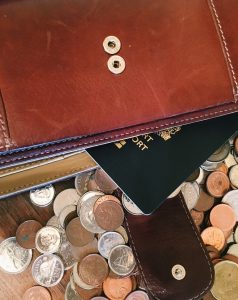The forex market is one of the most volatile markets in the world, with prices fluctuating rapidly within a short period. To protect traders from losing their investments, different types of orders have been developed, including stop orders. A stop order is an order placed with a broker to buy or sell an asset when it reaches a specific price level. A stop order is used to limit a trader’s loss or to lock in profits. There are different types of stop orders, including static stops and dynamic stops. In this article, we will discuss dynamic stops and how they work in the forex market.
What are dynamic stops?
Dynamic stops are stop orders that are placed based on a market’s volatility. Unlike static stops, which are fixed at a specific price level, dynamic stops move with the market, adjusting to changes in volatility. Dynamic stops are also called volatility stops because they are designed to protect traders from sudden market movements caused by high volatility.
How do dynamic stops work in forex?
Dynamic stops are calculated based on the average true range (ATR) of a currency pair. The ATR is a technical indicator that measures the volatility of a currency pair over a specific period. The ATR is calculated by taking the average of the true range of a currency pair over the specified period. The true range is the highest value of the following:
– The difference between the current high and the current low
– The difference between the current high and the previous close
– The difference between the current low and the previous close
After calculating the ATR, the dynamic stop is placed a certain number of ATRs away from the current market price. The number of ATRs used to calculate the dynamic stop depends on the trader’s risk appetite and the market’s volatility. Generally, the more volatile the market, the wider the dynamic stop should be.
For example, suppose a trader wants to buy the EUR/USD currency pair, which is currently trading at 1.2000. The trader decides to use a dynamic stop of two ATRs. The ATR of the EUR/USD over the last 14 days is 0.0050. Therefore, the dynamic stop would be placed at 1.1900 (1.2000 – 2 x 0.0050).
If the market price of the EUR/USD rises to 1.2100, the dynamic stop would move up to 1.2000 (1.2100 – 2 x 0.0050). If the market price falls to 1.1900, the dynamic stop would remain at 1.1900. If the market price falls further to 1.1800, the dynamic stop would move down to 1.1700 (1.1800 – 2 x 0.0050).
Advantages of dynamic stops
Dynamic stops have several advantages over static stops. Firstly, dynamic stops adjust to changes in market volatility. If the market is more volatile, the dynamic stop will be wider, providing more protection to the trader. Secondly, dynamic stops can help traders stay in a trade for longer. If the market is trending, a dynamic stop may allow the trader to ride the trend for longer without getting stopped out prematurely. Finally, dynamic stops can help traders avoid false breakouts. False breakouts occur when the market price briefly breaks through a support or resistance level before quickly reversing. A dynamic stop can help traders avoid getting stopped out during these false breakouts.
Conclusion
Dynamic stops are a useful tool for forex traders who want to protect their investments from sudden market movements caused by high volatility. Dynamic stops are calculated based on the average true range of a currency pair and move with the market, adjusting to changes in volatility. Dynamic stops have several advantages over static stops, including adjusting to changes in market volatility, allowing traders to stay in a trade for longer, and avoiding false breakouts. As with any trading strategy, it is important for traders to use dynamic stops in conjunction with other technical and fundamental analysis tools to make informed trading decisions.





